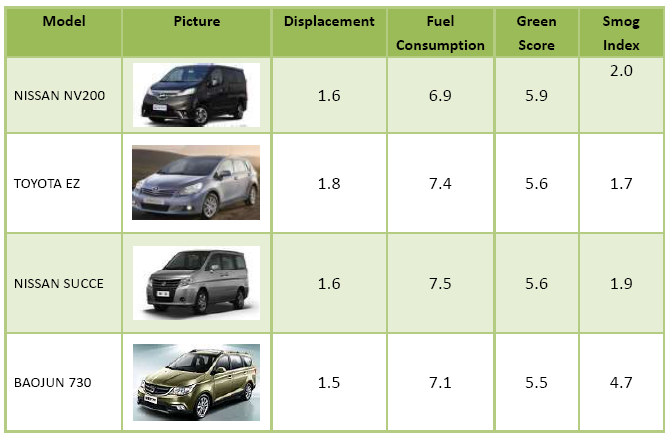News I 2015 iCET Chinese Green Car Finalists
On May 15, 2015, the Global Clean Vehicle Summit press conference was held at the Kempinski Hotel in Beijing. Innovation Center for Energy and Transportation (iCET) is pleased to announce this year’ finalists of its flagship annual ranking, the 2015 Chinese Green Car.
The China Green Car (CGC) Index is a scientific and transparent tool that utilizes internationally recognized methods of fuel consumption, tailpipe emissions, and curb-weight to reflect the environmental and health impacts of China’s vehicle market. The system’s two major outputs are a CGC Index (the higher the better) for capturing vehicle life cycle environmental and health impact, and a Smog Index ranking (the lower the better) for informing vehicle’s relative emissions impact.
For six consecutive years, China has been the world's largest car market. Automobiles in China account about 90% of Chinese gasoline consumption and 60% of diesel use. China’s high automotive growth is responsible for large amounts of air pollutants and greenhouse gases emissions. Cars have become the primary source of air pollution in Beijing, Guanzhou, Shenzhen and Hangzhou as well as many other emerging cities in the world. Dr. An Feng, iCET’s founder and president, has noted that cars are not necessarily associated with serious air pollution. For example, Los Angeles has adopted clean vehicle technologies whose emissions can sometimes even be “cleaner” than the ambient air quality. Conventional fuel consumption in developed countries has declined by more than 50% since the beginning of the oil security era over 20 years ago. The CGC Index demonstrates that fuel consumption rates of vehicle models within same vehicle categories can vary more than 20% and emissions of vehicle models can vary more than 70%.
In 2015, there will be voluntary environmental testing for the CGC finalists for emissions and fuel consumption, with the support of the United Nations Environment Programme, the Vehicle Emission Control Center under the Ministry of Environmental Protection, and the Energy Foundation. The testing demonstrates a joint effort by corporations, the public sector, media and general public to improve China’s environment wellbeing by mitigating health and airs hazards. All parties are encouraged to participate. This cross-sectoral collaboration will strengthen different companies’ credibility, image, and their commitment to corporate social responsibility. In addition, the China Green Car 2015 Award Ceremony will be one of the centerpieces of the Global Clean Vehicle Summit at the end of September. Some of the CGC finalists will be selected to be a part of the Summit’s public demonstrations.
The CGC Index also informs potential car buyers through a comprehensive 10-vehicle class comparison for each of the best performing cars. The different classes include electric cars, hybrids, small cars, compact cars, midsize cars, large cars, luxury cars, sports cars, SUVs, and MPVs. iCET hopes that its CGC Index will make car sustainability know-how accessible to the general public as well as promote economics of scale for clean vehicle solutions and clean cars market prices. This will improve public confidence and promote manufacturing practices that elimination of health and environmental hazards.
Chai Jing’s "Under the Dome" documentary sparked the public's environmental awareness and reinforces the importance of the CGC Index. The film revealed that the quality of oil is one of the major causes of transport pollution. The documentary also explained how the car itself is also a major factor because their fuel consumption and emissions directly affect urban air quality. For consumers, it is impossible to know about the quality of oil at the pump. However, it is relatively easy to choose a vehicle with more sustainable features. For corporations, an increase in clean vehicle supply will drive down costs and deliver the expected corporate social responsibility.
2015 CGC finalists demonstrate that there are cars on the market can have higher fuel and emissions savings than the national standards level. For example, the National V Emission Standard corresponds with a Smog Index of 11 while CGC finalists achieve a Smog Index score of 3 or even less. The Skoda Fabia, Honda Platinum Core, Kia K5 Hybrid score less than 1 on the Smog Index! The CHC Index illustrates how the environmental efficiency of the finalists leads to superior performance. This can be seen in cars such as the Lexus CT200h, Toyota Prius, Changan Benben Mini, BaoJun LeChi, and GM Sail.
Mr. Zhang Shigang, the Chief Representative of UNEP, has promoted sustainable consumption and expressed his strong support for the CGC Index. Mr. Ma Dong, director of MEP Vehicle Emission Control Center Policy, also expressed his great support for the CGC Index because it plays a great role in creating green consumption and green lives for the public. Support for CGC has also come professional media channels such as iFeng, Sina Auto, China Automotive News, China Daily, China Business News, and Auto Expo.
Attachment: 2015 Chinese Green Car Models Finalists List
2015 China Green Score Top 10

Note: The above table includes the best green score performing model of China 2014 new ICE vehicles.
2015 Smog Index Top 10

Note: The above table includes the best smog index performing model of China 2014 new ICE vehicles.
2015 CGC Best Performing Hybrids
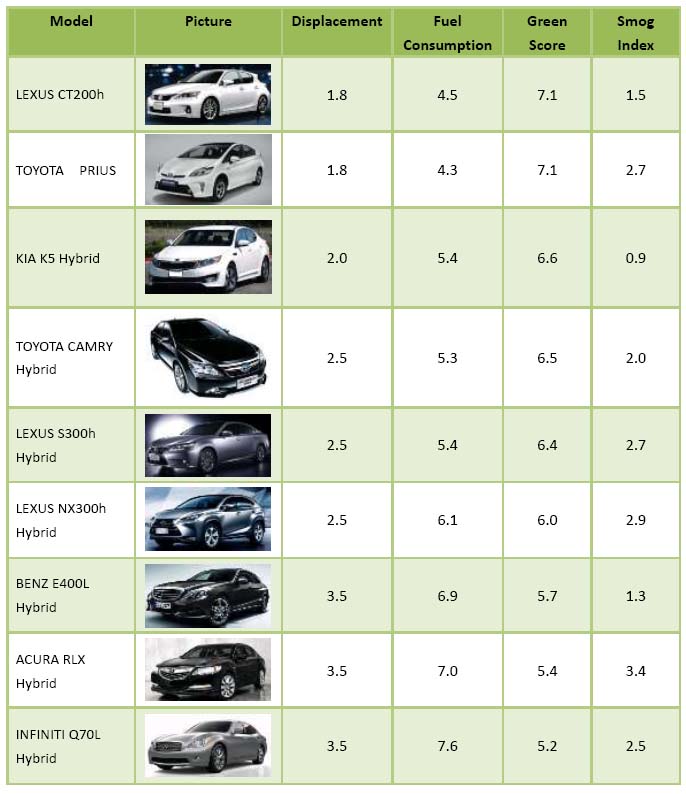
2015 CGC Best Performing Small Cars
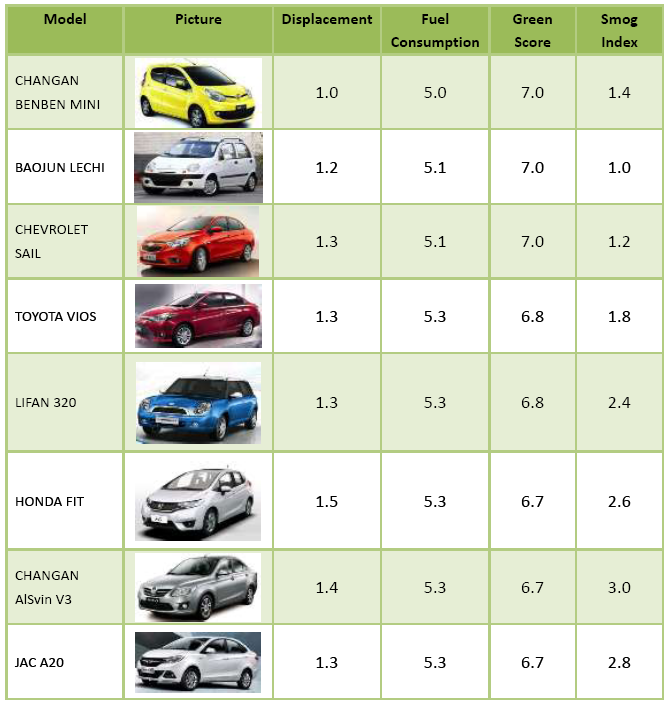
2015 CGC Best Performing Compact Cars
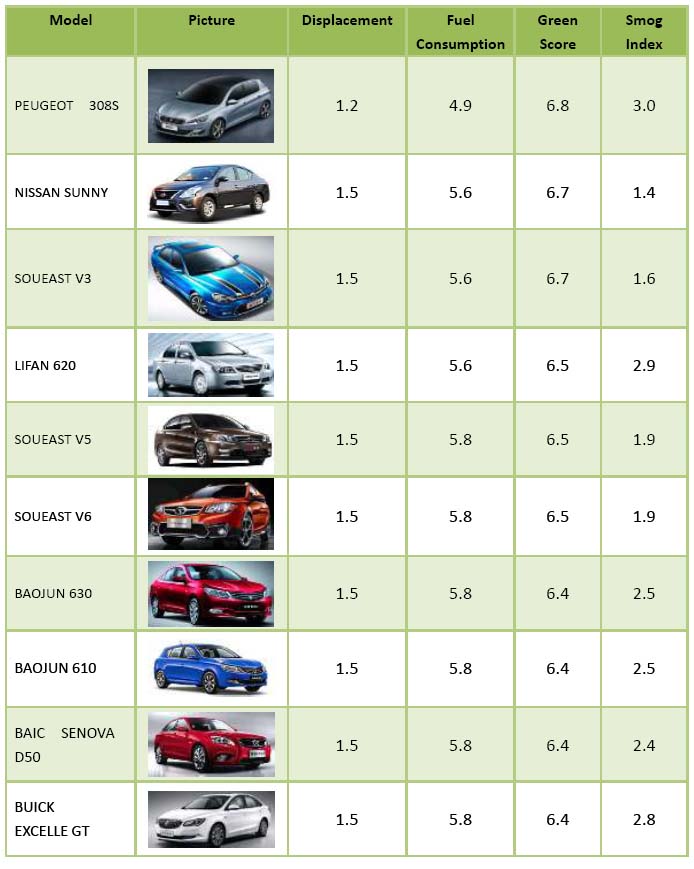
2015 CGC Best Performing Mid-Size Cars
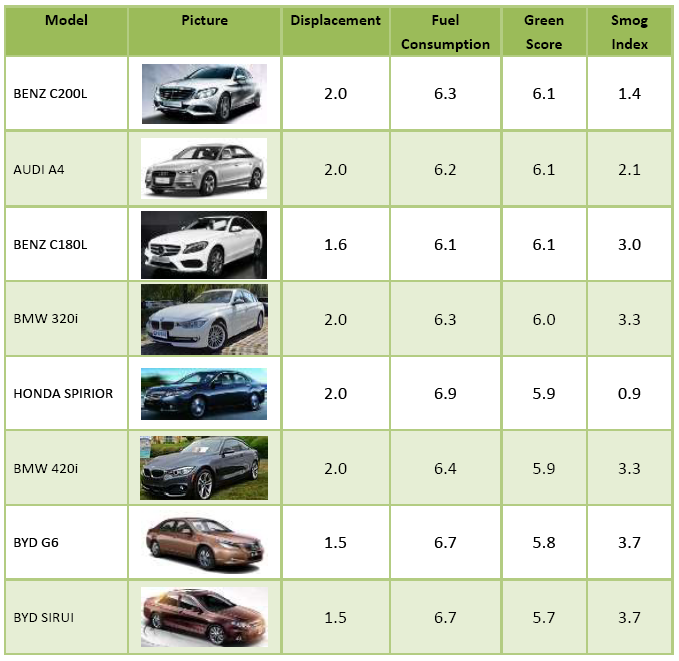
2015 CGC Best Performing SUVs

2014 Green Score Best Performing Large Sedan

2015 CGC Best Performing Luxury

2015 CGC Best Performing Sports Cars
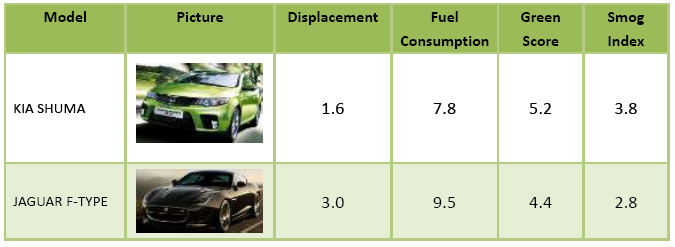
2015 CGC Best Performing MPVs
